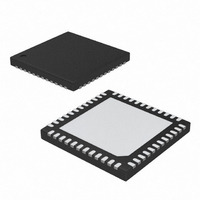MAX1586CETM+ Maxim Integrated Products, MAX1586CETM+ Datasheet - Page 28

MAX1586CETM+
Manufacturer Part Number
MAX1586CETM+
Description
IC POWER MANAGEMENT 48-TQFN
Manufacturer
Maxim Integrated Products
Datasheet
1.MAX1587CETLT.pdf
(30 pages)
Specifications of MAX1586CETM+
Applications
Handheld/Mobile Devices
Voltage - Supply
2.6 V ~ 5.5 V
Operating Temperature
-40°C ~ 85°C
Mounting Type
Surface Mount
Package / Case
48-TQFN Exposed Pad
Output Voltage Range
0.7 V to 5.5 V
Output Current
1.2 A
Input Voltage Range
2.6 V to 5.5 V
Input Current
60 uA
Power Dissipation
2105 mW
Operating Temperature Range
- 40 C to + 85 C
Mounting Style
SMD/SMT
Input Voltage
5.5V
No. Of Outputs
1
Power Dissipation Pd
2.105W
Supply Voltage Range
2.6V To 5.5V
No. Of Pins
48
Filter Terminals
SMD
Rohs Compliant
Yes
Frequency
1MHz
Lead Free Status / RoHS Status
Lead free / RoHS Compliant
Current - Supply
-
Lead Free Status / Rohs Status
Lead free / RoHS Compliant
High-Efficiency, Low-I
Dynamic Core for PDAs and Smart Phones
Figure 8. BKBT connection when no backup battery is used, or
if an alternate backup scheme, not involving the
MAX1586/MAX1587, is used.
Figure 9. A 1-cell rechargeable Li+ battery provides more back-
up power when a primary cell is insufficient. The cell is charged
to 3.3V when V1 is active. Alternately, the battery can be
charged from IN if the voltages are appropriate for the cell type.
Figure 10. A 1-cell NiMH battery can provide backup by boost-
ing with a low-power DC-DC converter. A series resistor-diode
trickle charges the battery when the main power is on.
28
BACKUP BATTERY
RECHARGEABLE
______________________________________________________________________________________
POWER
Li+ RECHARGEABLE
MAIN
BACKUP BATTERY
1-CELL
NiMH
4.7μF
1-CELL
4.7μF
1N4148
POWER
MAIN
4.7μF
1N4148
10kΩ
BATT
GND
4.7μF
MAX1724
D1
1μF
1kΩ
LQH32C 10μH
1μF
EZK30
MURATA
SHDN
OUT
10μF
LX
IN
V1
BKBT
V7
IN
BKBT
V7
4.7μF
MAIN
POWER
MAX1586
MAX1587
MAX1586
MAX1587
3.0V
1μF
IN
BKBT
V7
MAX1586
MAX1587
Q
PMICs with
If more backup power is needed and a primary cell has
inadequate capacity, a rechargeable lithium cell can be
accommodated as shown in Figure 9. A series resistor
and diode charge the cell when the 3.3V V1 supply is
active. In addition to biasing V7, the rechargeable bat-
tery may be required to also power other supplies.
In some systems, a NiMH battery may be desired for
backup. Usually this requires multiple cells because
the typical NiMH cell voltage is only 1.2V. By adding a
small DC-DC converter (MAX1724), the low-battery
voltage is boosted to 3V to bias BKBT (Figure 10). The
DC-DC converter’s low operating current (1.5µA typ)
allows it to remain on constantly so the 3V BKBT bias is
always present. A resistor and diode trickle charge the
NiMH cell when the main power is present.
Good PCB layout is important to achieve optimal perfor-
mance. Conductors carrying discontinuous currents and
any high-current path should be made as short and wide
as possible. A separate low-noise ground plane contain-
ing the reference and signal grounds should connect to
the power-ground plane at only one point to minimize the
effects of power-ground currents. Typically, the ground
planes are best joined right at the IC.
Keep the voltage feedback network very close to the
IC, preferably within 0.2in (5mm) of the FB_ pin. Nodes
with high dV/dt (switching nodes) should be kept as
small as possible and should be routed away from
high-impedance nodes such as FB_. Refer to the
MAX1586 or MAX1587 evaluation kit data sheets for a
full PCB example.
Rechargeable NiMH Backup Battery
Rechargeable Li+ Backup Battery
PCB Layout and Routing












